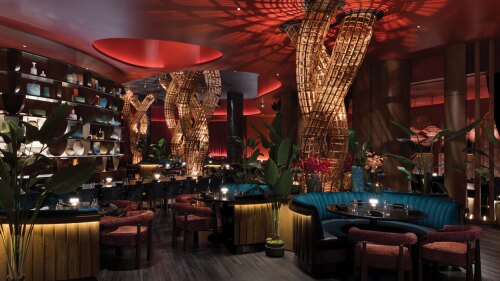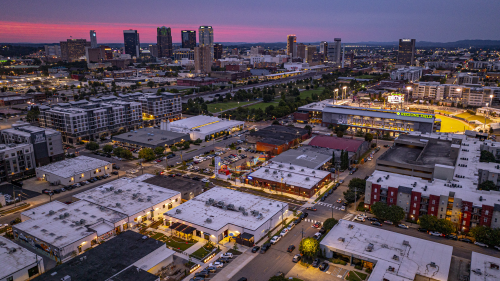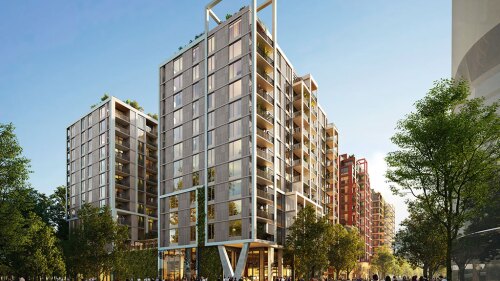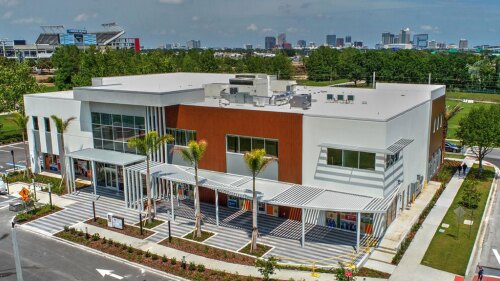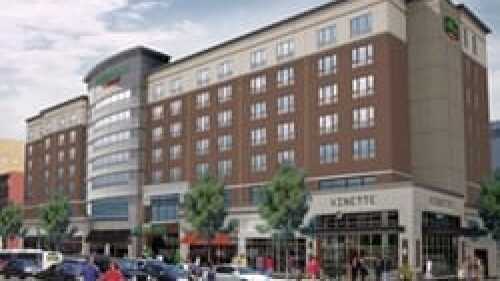Property Types
Hotels and Resorts
The hotel industry in the United States faces complex challenges in 2025, according to Jan Freitag, national director of hospitality analytics for the CoStar Group. During the “State of the U.S. Hotel Industry” presentation at the ULI 2025 Spring Meeting in Denver, Colorado, Freitag highlighted the challenges facing the hotel business amid macroeconomic uncertainty.
Once a sprawling expanse of uncharted land, Las Vegas, Nevada, has evolved into the entertainment capital of the world, a gaming super-hub, and a premier destination for sports. This remarkable transformation didn’t happen overnight; it stemmed from decades of strategic planning, investment, and visionary zoning recommendations.
Las Vegas is unlike any other place in America. Each year it draws more than 40 million visitors to the dazzling casinos and hotels that “turn night into daytime”—and transform the city into a glittering jewel in the desert. With 164,000 hotel rooms, Las Vegas is the largest hospitality market in the U.S.—outpacing Orlando, Florida, the next biggest market, by approximately 15 percent, according to JLL.
Industrial
Standing in the shadow of Regions Field and within earshot of Railroad Park, Birmingham’s Urban Supply hints at what the next chapter of downtown life could look like. Once-quiet brick warehouses are being steadily reimagined into patios, storefronts, and gathering spaces along a new pedestrian alley. Early tenants have begun to open their doors, and programming is slowly bringing people into the district. While the project is still in its early stages, the framework is in place for a vibrant hub that will grow block by block in the years ahead.
What trends are shaping the future of the industrial sector? Four experts from ULI’s Industrial and Office Park Development Council talk about the industrial submarkets and property types that offer the greatest opportunities, challenges developers face in bringing new projects to market, ways artificial intelligence and emerging technologies are reshaping the sector, tenant priorities, and other key trends.
After a quiet first half of 2024, CMBS originations increased 59 percent in Q3 on a year-over-year basis, according to the Mortgage Bankers Association’s Quarterly Survey.
Mixed-Use
The year 2011 marks 75 years of leadership in land use. But, while this is a milestone anniversary, it is a time to look forward to the next 75 years. Our decisions on what and where to develop will be guided not by a plentiful supply of land throughout urban regions, but by how best to use the land that is left. Dramatic changes are necessitating a major overhaul in what and where we build. Read about the forces of change that Patrick Phillips, CEO of ULI, sees now in place.
Austin is one of the fastest-growing cities in the nation, and has relatively low unemployment and a housing market that was spared the recession’s worst impacts. The city’s economy is doing fairly well in spite of the downturn, says Todd C. LaRue, principal in the Austin office of RCLCO Real Estate Advisors and member of the executive advisory board for ULI Austin. Read what else he and other ULI members have to say about the Austin market.
Developing modern buildings adjacent to historic icons can present unique challenges—especially in an area of downtown San Francisco with an active historic preservation community. Learn how a developer solved the puzzle of a San Francisco site by integrating a historic building with its modern neighbors to create a single structure with three parts.
Multifamily
Making a significant move in the multifamily investment space, industry veteran Matt Ferrari officially launched PXV Multifamily, a private investment firm poised to acquire up to $2 billion in assets over the next 36 months. With a focus on both middle-market value-add properties and institutional-quality opportunities across the United States, PXV stands ready to capitalize on emerging market trends and challenges. Ferrari is an active member of the Urban Land Institute and the Multifamily Blue Flight Product Council.
In 2013, when the founders of Redbrick LMD looked over a large swath of land in Southeast Washington, D.C., they immediately connected with the breathtaking views of the U.S. Capitol, the Washington Monument, the Anacostia River, and expansive green space. They recognized that this kind of access was rare anywhere in the region, but especially in this often-overlooked corner of the city.
The evolution of community efforts to improve access to housing reveals that successful projects often hinge on fostering strong local partnerships that can provide essential supports and services.
Office
Once the butt of jokes by late-night comedians, Newark now has building cranes dotting its skyline—proof that the Garden State’s largest city is experiencing something of a renaissance.
In its transition from an industrial economy to a knowledge-based one, Kendall Square in Cambridge, Massachusetts, has become the most robust innovation-based cluster in the nation—if not the world.
Cost is secondary to value right now, declared one panelist at a session titled “Rethinking the Office Market” at the ULI 2011 Fall Meeting and Urban Land Expo in Los Angeles.
Residental
The ULI Terwilliger Center for Housing has announced the finalists of this year’s Jack Kemp Excellence in Affordable and Workforce Housing Award competition, a program that honors developments that ensure housing affordability for people with a range of incomes. The winners will be announced later this year during a general session at the 2015 ULI Fall Meeting in San Francisco.
The Connecticut Housing Finance Authority’s Small Multifamily Rental Development Strategy and the Palm Beach County Workforce Housing Program have been selected as finalists for the 2015 Robert C. Larson Housing Policy Leadership Award by the ULI Terwilliger Center for Housing.
A generation ago, many children in New York City’s Bronx borough were languishing in underperforming schools. Informed by a growing body of research and buoyed by the area’s can-do spirit, community leaders embarked on an ambitious plan to right this wrong. Their meticulous work came to fruition two years ago with the New Settlement Community Campus.
Retail
For decades, civic leaders have tried to revitalize Market Street, San Francisco’s central thoroughfare, only to see their efforts founder. “I sometimes call it the great white whale of San Francisco,” says Eric Tao, managing partner at L37 Development in San Francisco and co-chair of ULI San Francisco. “Every new mayor, every new planning director, every new economic development director has chased that white whale.” This year, however, an international competition of ideas hosted and run by ULI San Francisco, with support from the ULI Foundation, generated fresh momentum for reimagining the boulevard. The competition drew 173 submissions from nine countries and sparked new conversations about the future of downtown San Francisco.
The OAK project began in 2009, when a development firm set their sights on the corner of Northwest Expressway and North Pennsylvania Avenue, the state’s most important and busiest retail intersection. As the region’s only parcel capable of supporting a vertically integrated project of this scale and density, that land represented an opportunity to create something truly special.
As aging retail continue to evolve, one increasingly popular trend has been to redesign malls as town centers—recalling a time when such commercial districts were the heart and soul of a community. Mall–to–town center retrofits are emerging throughout the nation, especially in suburban communities, where pedestrian-friendly, mixed-use environments are highly attractive to millennials now raising families.



